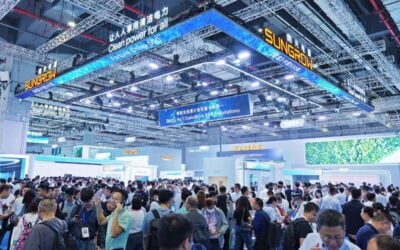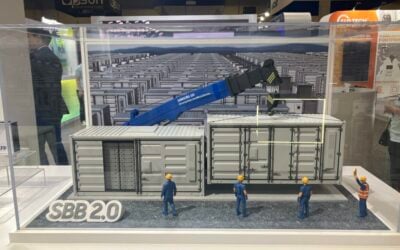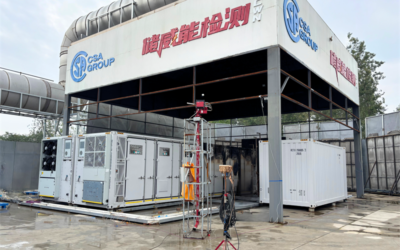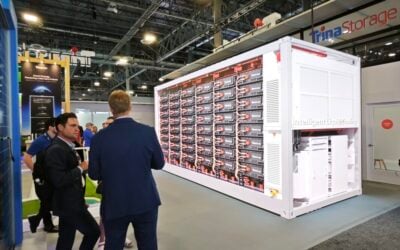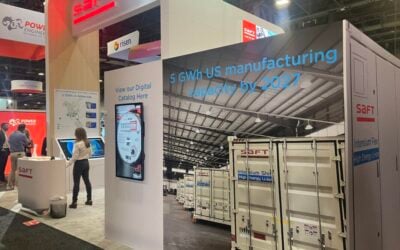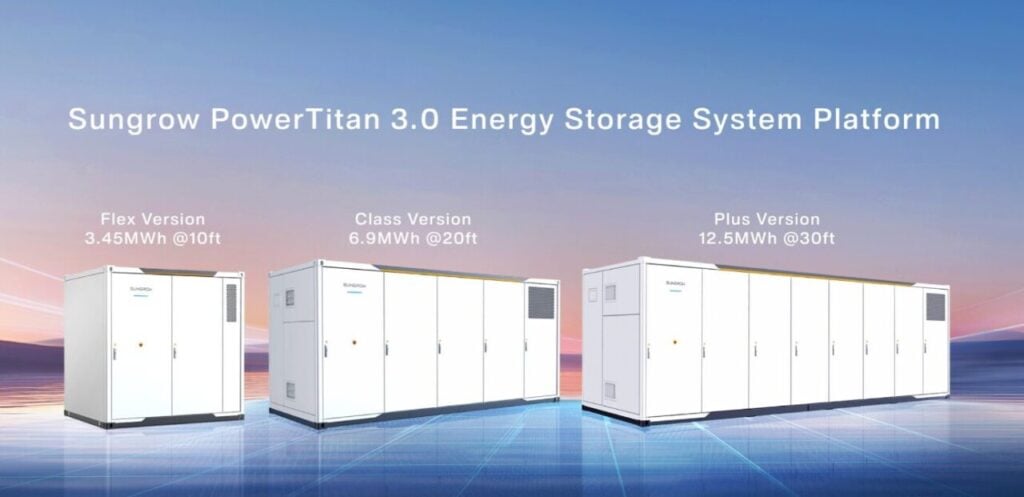
Inverter and BESS firm Sungrow has launched its latest grid-scale energy storage product offering beyond the 20-foot form factor, following in the footsteps of other providers.
The company’s PowerTitan 3.0, successor to its 20-foot containerised PowerTitan 2.0, is available in 10-foot ‘Flex’, 20-foot ‘Class’ and 30-foot ‘Plus’ sizes, supporting durations of 2-12 hours.
The 10-foot version has a capacity of 3.45MWh, the 20-foot one offers 6.9MWh and the 30-foot system has 12.5MWh. Sungrow said it can survive extreme conditions (-40°C to +55°C and up to 5,000m altitude).
Just after this article was published, Sungrow clarified to Energy-Storage.news that the PowerTitan 3.0 is an AC block design (same as PowerTitan 2.0) meaning it has BESS and power conversion system (PCS) equipment integrated within the same unit. The 12.5MW/50MWh size refers to four of the 30-foot units stacked together into one ‘block’.
Try Premium for just $1
- Full premium access for the first month at only $1
- Converts to an annual rate after 30 days unless cancelled
- Cancel anytime during the trial period
Premium Benefits
- Expert industry analysis and interviews
- Digital access to PV Tech Power journal
- Exclusive event discounts
Or get the full Premium subscription right away
Or continue reading this article for free
The company claimed its 30-foot product is the world’s largest battery energy storage system (BESS) both in capacity and energy density,
The new solutions have the option to use a 684Ah stacking large battery cell which the company said delivers up to 12.5MW/50MWh per AC block. The firm said this design enables a 45% reduction in land footprint and 10% reduction in cabling by 10%, using a 1GWh project as an example.
The firm claimed an industry-first large-scale application of a fully liquid-cooled Silicon Carbide Power Conversion System (SiC PCS), achieving 99.3% maximum efficiency even in hot environments.
Sungrow, which is headquartered and manufactures its products in Hefei, China, is one of the largest BESS providers globally. Just in the past month it commissioned projects in Chile and Finland, and secured large orders in South Africa and (again) Chile.
Modularity
The modular nature of the new solution follows the trend of other system integrators and BESS manufacturers diversifying their solutions away from the 20-foot form factor, noted by Energy-Storage.news after the ees Europe trade show in Germany in May.
One big driver of this is 20-foot products reaching the weight limit for transportation on some roads, as well as a significant jump and diversification in battery cell sizes from OEMs. The past few years have seen virtually all providers use 280/314Ah cells, but they are now much large, Sungrow’s stacking cell being a good example.
Grid-forming built-in
The new product is also embedded with Sungrow’s Stem-Cell Grid-Forming Tech 2.0, which it said offers grid-forming synchronously, gigawatt-scale black start, mode switching between grid-following and grid-forming, adaption to wide-range SCR changes and 20 milliseconds rapid response and 90° symmetrical/asymmetrical phase angle jump.

